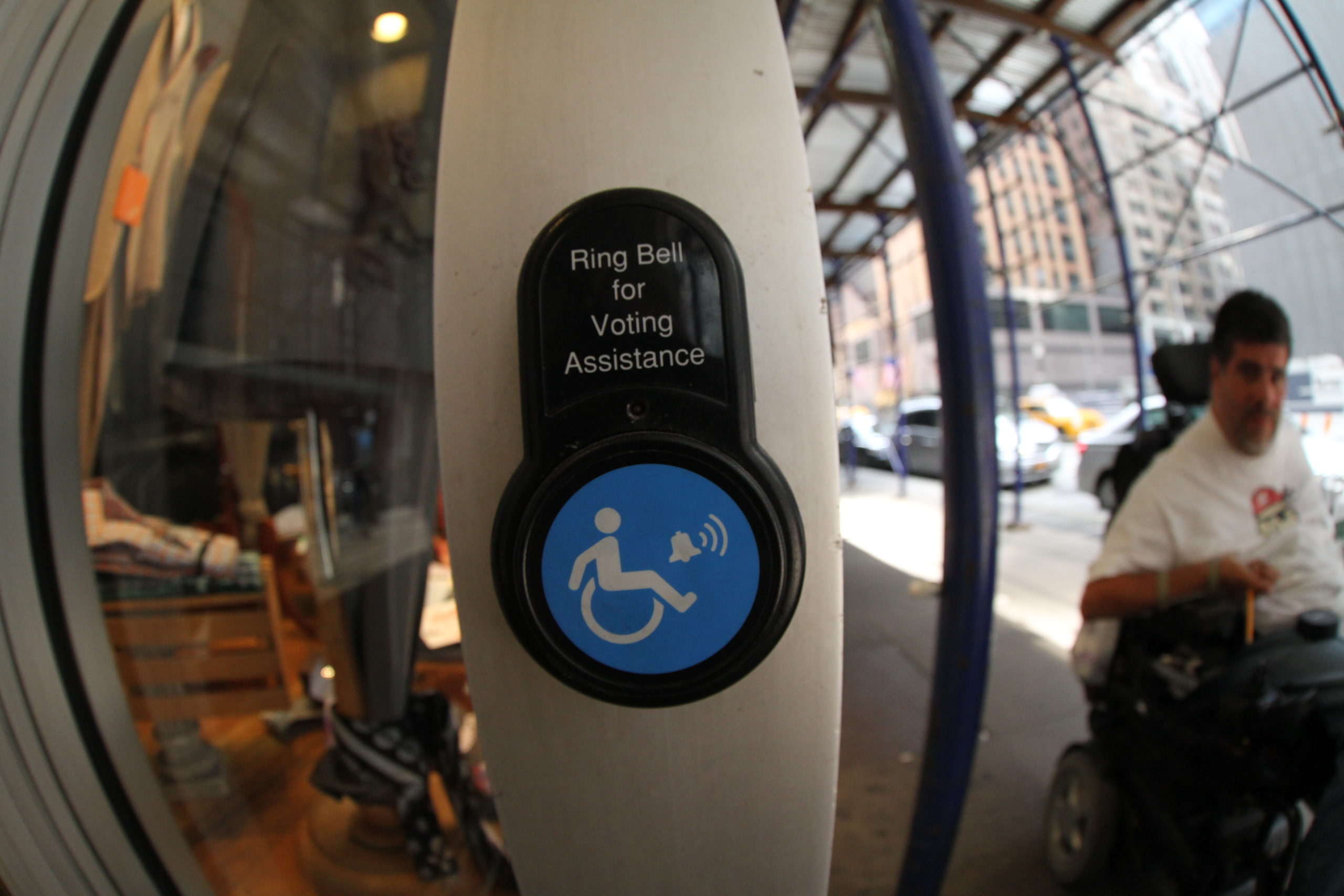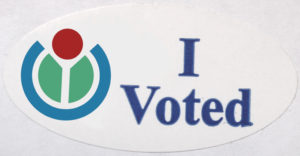- November 03, 2016
- 0 Comments
- In Accessible Design and Construction
- By
Is Voting Accessible?
Having lived in Washington, DC for over a decade, I’ve cultivated what some may call a geeky sense of pride in upholding my civic duty to vote. Last Saturday I stood in line at 8am with nearly 200 other Washingtonians, eager to cast an early ballot for the 2016 Presidential Election. I noticed a man using a cane join the line behind me. Further ahead of us was an elderly woman in a wheelchair. My mind started wandering down a path that is all too familiar for those of us on SWA’s Accessibility Team:

Would the front entrance provide access for wheelchair users?
Would clear pathways be provided to registration tables and polling machines?
Have volunteers been trained to provide reasonable accommodations?
Unfortunately, my concerns aren’t unfounded. In a 2008 study, the Government Accountability Office estimated that 73% of polling places used in 2008 had architectural barriers that made access difficult or even impossible for people with disabilities. While Title II of the Americans with Disabilities Act (ADA) requires state and local governments to provide accessible polling places; the GAO survey showed only 27% of polling places to be accessible to people with disabilities in the 2008 elections.
Temporary Concern
The challenge often arises when schools, government centers, and community centers are temporarily used as polling places on Election Day. Such facilities may predate the ADA, and thus lack the necessary level of accessibility. While the ADA does not require such temporary facilities to undergo permanent modifications, public entities must ensure accessibility of polling places by using low-cost temporary measures, such as portable ramps or door stops. If temporary measures will not fix the barrier, then the public entity must look for an alternative, accessible polling place or use an alternative method of voting at the polling place.
Permanent Solution
In 2010, SWA’s Accessibility Team partnered with the Office of Public Education Facilities Modernization (OPEFM) to help remedy this issue. SWA surveyed 62 schools that were to be used as future polling stations throughout the District of Columbia, citing common barriers to accessibility such as steps to entrances, routes with steep slopes, and lack of clear width and maneuvering clearance at doors. Over the following year, the schools performed remediation measures to ensure full compliance had been achieved.
 Thankfully, and hopefully in small part due to SWA’s work, my assigned polling location was a paradigm of accessibility. My fellow voters navigated the registration lines and polling stations with ease, and the volunteers demonstrated expertise while amiably assisting with ballots. Watching the smiling voters leave with their “I Voted Early” stickers almost made me forget that not everyone can make it to the ballot box so easily. Almost.
Thankfully, and hopefully in small part due to SWA’s work, my assigned polling location was a paradigm of accessibility. My fellow voters navigated the registration lines and polling stations with ease, and the volunteers demonstrated expertise while amiably assisting with ballots. Watching the smiling voters leave with their “I Voted Early” stickers almost made me forget that not everyone can make it to the ballot box so easily. Almost.
Regardless of who you are voting for on November 8th, let’s elect to remember that all Americans deserve to exercise their fundamental right to vote.
